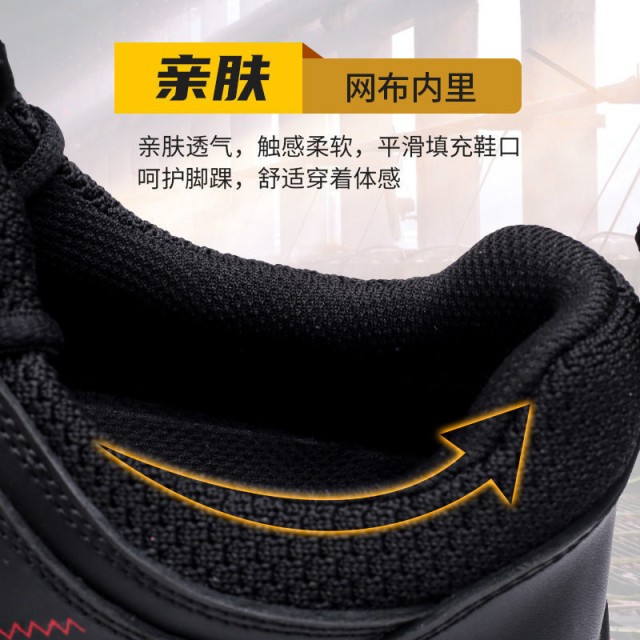For professionals in hazardous environments, the right work boots do more than prevent injuries—they reduce physical strain that leads to chronic fatigue. This guide explores how modern toe protection technologies balance safety with comfort, helping you make informed choices tailored to your workplace demands.
The Essential Role of Toe Protection in Hazardous Environments
Every year, thousands of workplace injuries involve foot trauma from heavy objects or compression. While traditional steel toe boots have been the go-to solution, advancements in material science now offer alternatives that meet safety standards without the drawbacks of excess weight or temperature sensitivity.
Key considerations when evaluating toe protection:
- Impact resistance: ASTM F2413-certified boots (both steel and composite) withstand 200J of drop force—equivalent to a 50 lb object falling from 4 feet.
- Compression protection: Must maintain a half-inch clearance under 2,500 lbs of pressure.
- Long-term wearability: Lighter materials like alloys or composites reduce muscle fatigue by 30–50% compared to steel.
Did you know? Warehouse workers wearing lightweight alloy toe boots report 40% fewer slips and trips due to improved mobility.
How Material Engineering Redefines Workplace Footwear
1. Composite Toe Boots
- Pros: Non-metallic (ideal for airports or electrical work), lighter than steel, and better insulation against temperature extremes.
- Cons: Slightly bulkier than alloys; may not suit ultra-high-impact environments like foundries.
2. Alloy Toe Boots
- Pros: Thinner design allows more toe room; 50% lighter than steel while offering comparable protection. Perfect for long shifts in construction or logistics.
- Cons: Less puncture-resistant than steel; avoid in settings with sharp debris.
3. Steel Toe Boots
- Pros: Unmatched durability for heavy industrial use (e.g., manufacturing plants).
- Cons: Conducts heat/cold, triggers metal detectors, and contributes to fatigue over 8+ hour shifts.
Case in point: A 2023 study found that assembly line workers switching to composite toe boots experienced 28% less end-of-day foot pain.
When Steel Isn’t Ideal: Scenarios Demanding Lightweight Alternatives
Steel toes excel in high-risk industrial settings, but these situations favor lighter options:
- Cold storage warehouses: Composite materials prevent heat loss.
- Electrical work: Non-conductive composites eliminate shock risks.
- Airport security: Alloy toes avoid metal detector delays.
- Long-distance walking (e.g., postal workers): Reduced weight minimizes knee and hip strain.
Pro tip: Pair alloy or composite toes with cushioned midsoles for all-day comfort in dynamic environments.
Industry-Specific Safety Standards and Real-World Impact
Case Study: Reducing Fatigue-Related Accidents in Warehouse Workers
A logistics company replaced traditional steel toe boots with ASTM-certified composite toe models for their 500+ warehouse staff. Within six months:
- Fatigue-related incidents dropped by 22% (fewer missteps from tired legs).
- Employee satisfaction rose 35% due to reduced foot and back pain.
- Productivity increased—workers completed 12% more daily tasks without discomfort.
The takeaway: Compliance with safety standards is just the baseline. Optimizing for comfort and protection creates measurable benefits.
Upgrade Your Safety Footwear with 3515
As a leading manufacturer for distributors and bulk clients, 3515 delivers work boots engineered for real-world performance. Whether you need composite toes for electrical safety or alloy designs for all-day mobility, our range combines certified protection with ergonomic innovation.
Ready to equip your team with safer, fatigue-reducing footwear? [Contact 3515] to discuss custom solutions for your industry.
Final thought: The best work boots don’t just shield your feet—they support your body’s endurance, turning safety gear into a productivity tool.
Related Products
- Wholesale Customizable Suede Safety Boots - Puncture-Proof with Velcro Closure
- Puncture-Resistant Velcro Safety Boots for Wholesale & Custom Manufacturing
- Customizable Anti-Smash Safety Boots for Wholesale & Private Label Manufacturing
- Wholesale Durable Breathable Safety Boots Custom OEM Manufacturer
- Wholesale Durable Safety Boots | Custom Steel Toe & Puncture-Resistant Manufacturing
Related Articles
- How to Choose Work Boots That Match Your Job's Safety Demands
- How to Choose Work Boots That Match Your Industry's Safety Needs
- How to Choose Work Boots That Match Your Job Demands and Safety Needs
- How Safety Work Boots Engineer Protection: Features and Standards for Targeted Hazard Mitigation
- How to Choose Work Boot Materials for Maximum Safety and Durability



















